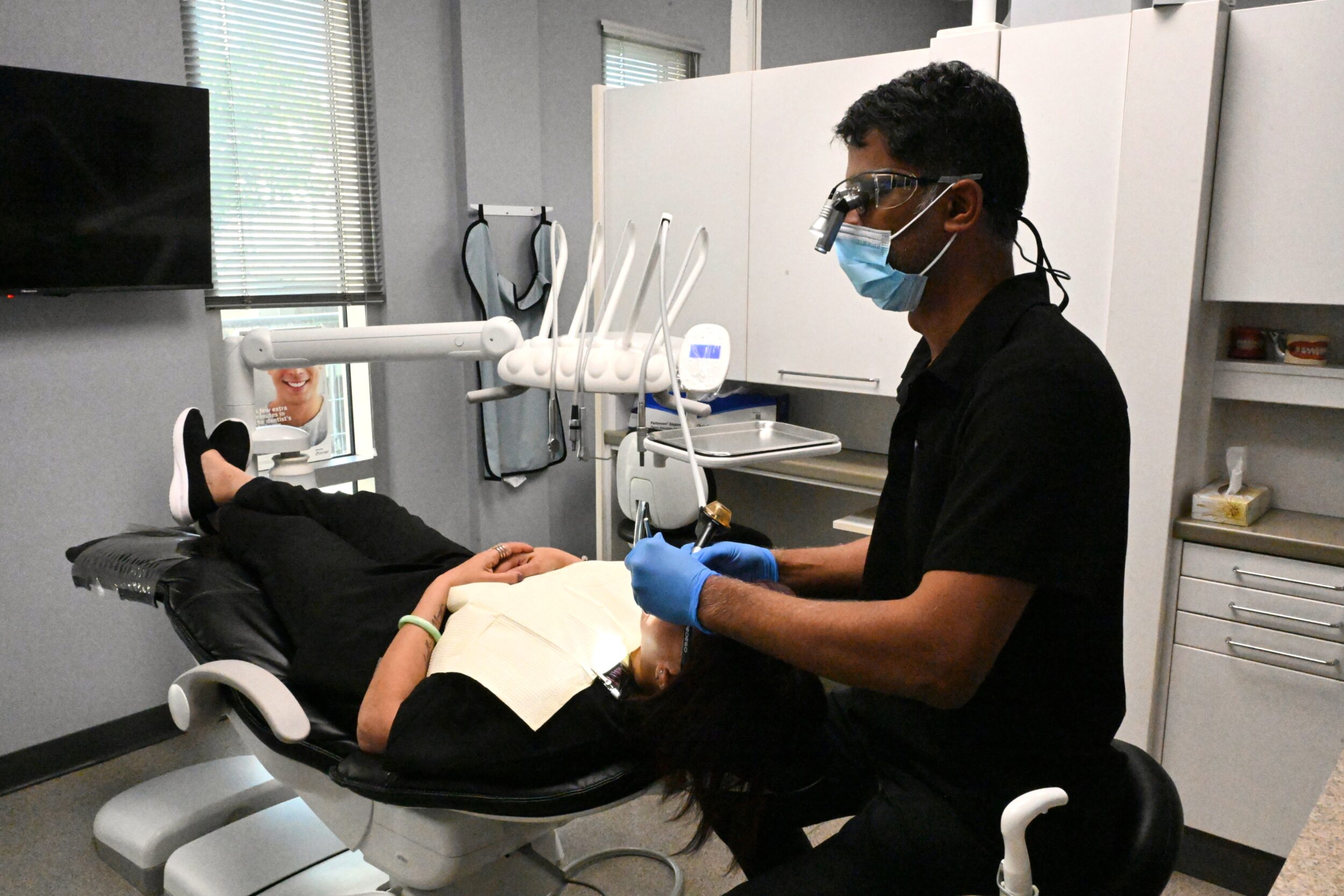Prophylaxis Teeth Cleaning in Calgary, AB

A dental prophylaxis involves thoroughly cleaning the teeth. Dental prophylaxis is essential for preventing periodontal disease and gingivitis from progressing.
When bacteria from plaque colonize on the gingival (gum) tissue, either above or below the gum line, periodontal disease and gingivitis occur. Inflammation and irritation caused by these bacteria colonies produce a chronic inflammatory response in the body. Therefore, the body begins to destroy gum and bone tissue, resulting in teeth shifting, becoming unstable, or falling out completely. The pockets between the gums and teeth become deeper and hold more bacteria that can travel to other parts of the body via the bloodstream.
Reasons for prophylaxis/teeth cleaning
Keeping the oral cavity healthy and halting the progression of gum disease is achieved with prophylaxis.
Prophylaxis has the following benefits:
- Removing tartar –
Plaque and tartar buildup, both above and below the gum line, can lead to serious periodontal problems if left untreated. In spite of the best brushing and flossing techniques, it may not be possible to completely remove debris, bacteria, and deposits from gum pockets. A dentist with specialized dental equipment needs to use their experienced eye to spot and treat problems such as tartar and plaque. - Aesthetics –
When your teeth are yellowing and stained, it’s hard to feel confident about your smile. During prophylaxis, unsightly stains can be removed from the teeth and the smile can be restored to its former glory. - Having a fresher breath –
Bad breath (halitosis) is often a sign of periodontal disease. The most common causes of bad breath are rotting food particles below the gum line, gum infection, and periodontal disease. Plaque, calculus, and bacteria are removed from the teeth in order to improve breath and relieve irritation. - Identifying health issues –
Dentists are often the first to diagnose health problems. In addition to screening for oral cancer and assessing the risk of periodontitis, prophylaxis can often detect signs of medical problems like diabetes and kidney disease. It is also possible to provide recommendations for modifying the home care regimen.
How does prophylaxis treatment work?
It is possible to perform prophylaxis during a regular dental appointment or under general anesthesia, if necessary. The latter is particularly common in cases where severe periodontal disease has been diagnosed by a dentist or suspected by the dentist. Sometimes an endotracheal tube is placed in the throat to prevent harmful bacteria from entering the lungs.
Generally, prophylaxis consists of several stages:
- Subgingival cleaning –
For patients with periodontal disease, this is the most important step because the dentist is able to remove calculus from the gum pockets and below the gum line. - Supragingival cleaning –
With scaling tools, the dentist will thoroughly clean the area above the gum line of plaque and calculus. - Root planing –
By smoothing the tooth root, the dentist eliminates any bacteria that may remain. Periodontitis sufferers are at risk from these bacteria, so eliminating them is one of the dentist’s highest priorities. - Medication –
After scaling and root planing, an antibiotic or antimicrobial cream is often applied to the gum pockets. Fast and healthy healing is promoted and discomfort is eased with these creams. - X-ray and examination –
Periodontal disease can be revealed by routine X-rays. An X-ray can be used to assess the extent of bone and gum recession, as well as to identify areas that may require future attention.
In order to prevent periodontitis, prophylaxis should be performed twice annually, but it should be performed every three to four months for patients suffering from the disease. Despite the fact that gum disease cannot be completely reversed, prophylaxis is one of the tools dentists have at their disposal to stop its destructive progress.
Please contact your dentist if you have any questions or concerns about prophylaxis or periodontal disease.